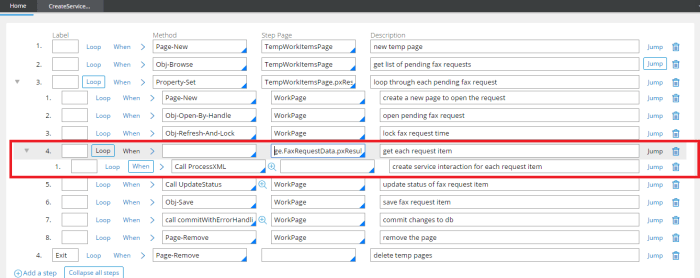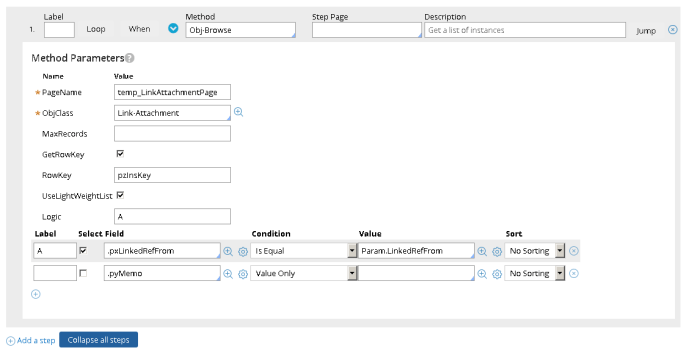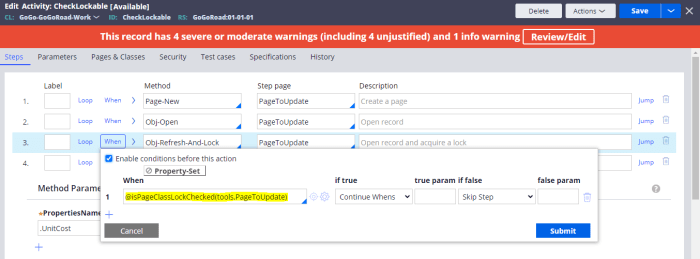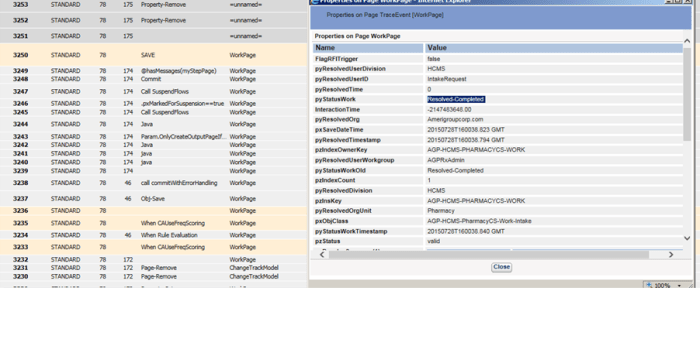Obj refresh and lock in pega – Embark on a journey into the realm of objective refresh and lock in Pega, where we unravel the intricacies of this powerful feature. From its fundamental concepts to advanced use cases, this guide will equip you with a comprehensive understanding of how to harness the potential of objective refresh and lock to enhance your Pega applications.
As we delve into the nuances of objective refresh and lock, we’ll explore real-world scenarios that demonstrate their practical applications. Discover the benefits they offer, the steps involved in their execution, and best practices to ensure their effective implementation.
Objective Refresh and Lock Concepts

Objective refresh and lock are important features in Pega that ensure data integrity and consistency. Objective refresh allows users to update data in an objective, while objective lock prevents other users from modifying the same data simultaneously. This helps maintain data accuracy and prevents conflicts.Objective
refresh is typically used when multiple users need to access and update the same data. By refreshing the objective, users can ensure they are working with the latest version of the data. Objective lock, on the other hand, is used when it is critical to prevent multiple users from modifying the same data at the same time.
While exploring obj refresh and lock in pega, it’s worth noting the significance of lab values. For a comprehensive reference, the ati lab values 2023 pdf provides detailed insights. Returning to obj refresh and lock in pega, these techniques offer effective approaches for managing object state and data integrity, ensuring the reliability and accuracy of your applications.
This can help prevent data corruption and errors.The benefits of using objective refresh and lock include:
- Improved data integrity and consistency
- Reduced risk of data corruption and errors
- Increased efficiency and productivity
Objective Refresh Process

Objective refresh is a crucial process that ensures the accuracy and relevance of objectives within Pega. This process involves identifying the correct objective to refresh, understanding the steps involved in refreshing, and following best practices to ensure a successful refresh.
Identifying the Correct Objective, Obj refresh and lock in pega
To identify the correct objective to refresh, it is important to consider the following factors:
- The objective’s current status and whether it is outdated or inaccurate.
- The impact of refreshing the objective on related processes and applications.
- The availability of resources and the timeline for the refresh process.
Objective Lock Process

Locking an objective prevents other users from making changes to it, ensuring data integrity and maintaining control over critical objectives.
To lock an objective, follow these steps:
- Open the objective in edit mode.
- Click the “Lock” button located in the toolbar.
- Confirm the lock by clicking “Yes” in the confirmation dialog box.
When an objective is locked, it is marked as “Locked” in the status field. Only the user who locked the objective can unlock it.
Best Practices for Objective Refresh and Lock

Refreshing and locking objectives are crucial processes in Pega. By following best practices, you can ensure that your objectives are up-to-date, secure, and aligned with your business goals.
Common Pitfalls to Avoid
- Refreshing objectives too frequently can lead to performance issues and data inconsistency.
- Locking objectives without proper authorization can prevent other users from accessing them.
- Failing to unlock objectives after use can result in unnecessary data retention and security risks.
Tips for Optimizing the Process
- Establish a regular schedule for refreshing objectives based on business needs and data volatility.
- Implement automated processes for refreshing and locking objectives to reduce manual errors and improve efficiency.
- Use role-based permissions to control who can refresh and lock objectives, ensuring data security.
- Set up alerts to notify users when objectives are refreshed or locked, providing transparency and accountability.
- Monitor the objective refresh and lock logs regularly to identify and address any potential issues.
Troubleshooting Objective Refresh and Lock Issues

Objective refresh and lock processes are crucial for maintaining data integrity and ensuring smooth operation of your Pega application. However, issues can arise during these processes, hindering their successful execution.
Identifying and resolving these issues promptly is essential to minimize disruptions and maintain the reliability of your system. This section will guide you through common problems that may occur during objective refresh and lock and provide solutions to help you troubleshoot and prevent them.
Identifying Common Issues
- Data Inconsistency:Mismatched data between the source and target systems after refresh.
- Lock Failures:Inability to acquire or release locks during the lock process.
- Performance Degradation:Slow or unresponsive systems during refresh or lock operations.
- Process Errors:Unexpected errors or exceptions encountered during the refresh or lock process.
Resolving the Issues
- Data Inconsistency:Verify data integrity in both source and target systems, check for data mapping errors, and ensure data synchronization mechanisms are working correctly.
- Lock Failures:Identify the root cause of lock failures, such as system resource contention or deadlocks. Adjust lock timeout settings, optimize lock strategies, and consider using distributed locking mechanisms.
- Performance Degradation:Optimize the refresh and lock processes by identifying and addressing performance bottlenecks. Consider using parallel processing, caching, or load balancing techniques to improve performance.
- Process Errors:Analyze error logs, debug code, and consult Pega documentation or support resources to identify the cause of errors. Update code, apply patches, or adjust configurations as necessary to resolve the issues.
Preventing Future Issues
- Regular Maintenance:Perform periodic system maintenance to ensure optimal performance and prevent issues from arising.
- Testing and Validation:Conduct thorough testing and validation of refresh and lock processes before deploying them in production environments.
- Monitoring and Logging:Implement monitoring and logging mechanisms to track system performance and identify potential issues early on.
- Best Practices:Adhere to best practices for objective refresh and lock, such as using proper locking strategies, optimizing performance, and ensuring data integrity.
Advanced Use Cases for Objective Refresh and Lock

Objective refresh and lock techniques extend beyond basic scenarios, offering advanced capabilities for managing objectives effectively. These use cases empower organizations to tailor their objective management strategies to meet specific business needs and achieve optimal outcomes.
One advanced use case involves leveraging objective refresh and lock to facilitate seamless transitions during organizational restructuring or mergers. By locking objectives at the appropriate time, organizations can preserve critical objectives while allowing for necessary adjustments to align with the new structure or combined entity.
Customizable Refresh Schedules
Advanced objective refresh techniques enable organizations to define customized refresh schedules that align with their specific business cycles or reporting periods. This flexibility allows for timely updates and reviews of objectives, ensuring they remain relevant and aligned with evolving business priorities.
Granular Lock Permissions
Objective lock techniques offer granular permissions, allowing organizations to control who can lock and unlock objectives. This fine-grained approach ensures that only authorized individuals have the ability to modify or finalize objectives, maintaining data integrity and preventing unauthorized changes.
Integration with Performance Management Systems
Advanced use cases integrate objective refresh and lock with performance management systems, enabling seamless alignment between objectives and performance evaluations. By linking objectives to performance metrics, organizations can track progress, provide feedback, and make informed decisions regarding employee performance and development.
Benefits of Advanced Objective Refresh and Lock Techniques
- Enhanced alignment with evolving business priorities
- Smooth transitions during organizational changes
- Improved data integrity and security
- Streamlined performance management processes
- Increased transparency and accountability
FAQ Section: Obj Refresh And Lock In Pega
What is the primary purpose of objective refresh in Pega?
Objective refresh allows you to update an objective’s data from its source system, ensuring that the data within Pega remains accurate and up-to-date.
When is it necessary to lock an objective in Pega?
Locking an objective prevents other users from making changes to it, ensuring data integrity and preventing conflicts when multiple users are working on the same objective.
What are some best practices to consider when refreshing and locking objectives?
Always identify the correct objective to refresh or lock, perform these actions during off-peak hours to minimize impact on system performance, and regularly review and adjust refresh and lock schedules to ensure optimal performance.